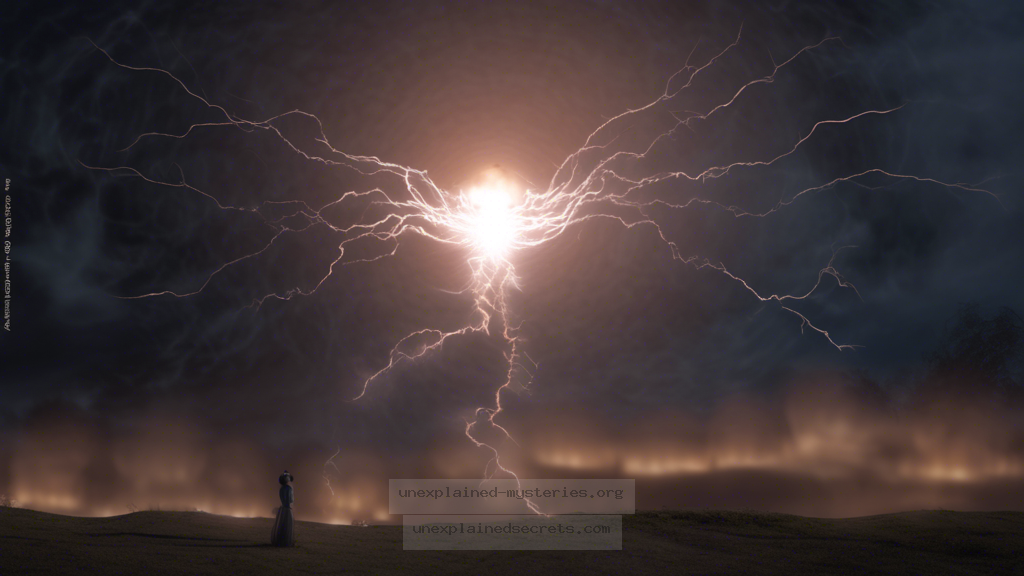What Causes the Unexplained Phenomenon of Ball Lightning?
What Causes the Unexplained Phenomenon of Ball Lightning?
Ball lightning is one of the most intriguing and perplexing phenomena in atmospheric science, captivating the imaginations of scientists and laypersons alike. Despite numerous sightings over the centuries, ball lightning remains largely misunderstood, with its origin and nature veiled in mystery. This question matters because understanding ball lightning could unlock secrets about atmospheric electricity, potentially leading to advancements in safety and technology. In this blog post, we will delve deep into the enigma of ball lightning, exploring its historical context, scientific theories, practical implications, and ongoing research.
Historical Context of Ball Lightning
The phenomenon of ball lightning has been documented for hundreds of years, with reports dating back to the 16th century. Early references often described glowing orbs appearing during thunderstorms, floating through the air, and sometimes even entering buildings. One notable account comes from a 1638 report by the English scientist Thomas Browne, who noted the occurrence of “fireballs” during electrical storms.
Throughout history, many cultures have attributed spiritual or supernatural significance to ball lightning. In the 19th century, scientists began to approach the phenomenon more systematically, yet it remained elusive. For example, in the 1980s, a team of Russian scientists studied ball lightning, capturing some footage, but the results were sporadic and inconclusive. Today, scientists continue to investigate the phenomenon, but many questions remain unanswered.
Core Concepts: What is Ball Lightning?
Ball lightning is typically described as a luminous sphere, ranging in size from a few centimeters to several meters in diameter. The color can vary, including shades of white, yellow, and blue. Unlike typical lightning, which is a brief and powerful discharge of electricity, ball lightning can persist for several seconds or even minutes, moving in unpredictable ways. It is often reported to hover, follow individuals, or even pass through solid objects.
Key Characteristics of Ball Lightning:
- Appearance: Glowing, spherical shape
- Size: Ranges from a few centimeters to several meters
- Duration: Can last several seconds to minutes
- Behavior: Unpredictable movement, sometimes entering buildings
Theories Behind Ball Lightning Formation
Several theories have been proposed to explain the formation of ball lightning, though none have gained universal acceptance. Here are some of the most prominent theories:
- Plasma Theory: Suggests that ball lightning is a form of plasma, created during electrical discharges in the atmosphere. This plasma could contain charged particles that allow it to remain stable for extended periods.
- Silicate Theory: Proposes that ball lightning is related to the combustion of silicon-rich materials, which could generate a glowing, ball-like structure when exposed to electrical discharges.
- Microwave Cavity Theory: Argues that electromagnetic fields created during lightning strikes could form resonant cavities in the atmosphere, containing energy in a stable, spherical form.
- Chemical Reactions: Some researchers suggest that specific chemical reactions, possibly involving unusual gases created during thunderstorms, could lead to the formation of ball lightning.
Practical Implications of Understanding Ball Lightning
Understanding ball lightning has significant practical implications, especially concerning safety during storms. If scientists can pinpoint the conditions under which ball lightning forms, it could lead to better predictions of electrical storms and enhance safety measures for individuals caught in thunderstorms. Furthermore, insights into ball lightning could also influence fields such as energy storage and plasma technology, potentially leading to innovative applications in energy generation and transportation.
Alternative Perspectives on Ball Lightning
While many researchers focus on scientific explanations for ball lightning, alternative perspectives exist. Some propose that ball lightning could be a manifestation of consciousness or an unexplained natural phenomenon that transcends current scientific understanding. This view opens up discussions about the intersection of science and spirituality, suggesting that not all phenomena fit neatly into the framework of empirical investigation.
Common Misconceptions About Ball Lightning
There are several misconceptions surrounding ball lightning that can cloud the understanding of this phenomenon:
- Myth of a single cause: Many people assume there is one definitive explanation for ball lightning; however, its complexity suggests it may be a combination of factors.
- It’s just a myth: Some skeptics dismiss ball lightning as mere folklore. Yet, documented sightings and scientific inquiries indicate that it is a real phenomenon.
- All lightning is the same: While ball lightning is associated with thunderstorms, it is distinct from traditional lightning and should be studied separately.
Notable Facts:
- Ball lightning has been reported in various countries and cultures, suggesting a universal phenomenon.
- Some scientists theorize that ball lightning could be harnessed for energy applications.
Best Practices for Investigating Ball Lightning
For those interested in studying ball lightning, several best practices can enhance the investigation:
- Document sightings: Keeping a detailed log of observations, including environmental conditions and behavior, can help build a comprehensive dataset for analysis.
- Collaborate with scientists: Working with physicists and meteorologists can provide a scientific framework for understanding the phenomenon.
- Use technology: Employing high-speed cameras and sensors during thunderstorms can capture data that might provide insights into the formation and behavior of ball lightning.
Future Developments and Ongoing Research
Research on ball lightning is ongoing, with scientists employing various approaches to unravel its mysteries. Recent advancements in technology, such as high-speed imaging and enhanced sensors, have improved the chances of capturing ball lightning in action. In addition, interdisciplinary collaboration is becoming more common, with physicists, chemists, and meteorologists working together to explore the phenomenon from multiple angles. As understanding deepens, the potential for practical applications continues to grow.
Conclusion: The Quest for Understanding Ball Lightning
Ball lightning remains one of the most compelling unexplained phenomena in the realm of scientific anomalies. With a rich historical context, a variety of theories, and significant practical implications, the pursuit of understanding this mysterious phenomenon continues to inspire curiosity and research. By embracing a multidisciplinary approach and dispelling misconceptions, scientists can work toward uncovering the secrets of ball lightning and its potential applications in our world. As we move forward in this quest for knowledge, the mysteries of ball lightning may one day illuminate our understanding of the natural world. ⚡💡
Other Articles
Recent Posts
- What Happened to Flight MH370? The Conspiracy Theories That Still Haunt Us
- What Secrets Lurk Within the Walls of the Infamous Trans-Allegheny Lunatic Asylum?
- What Evidence Supports the Existence of Bigfoot in the Pacific Northwest?
- What Happened to the Indus Valley Civilization? Unraveling the Mysteries of Ancient Urban Life
- Can Telepathy Be Scientifically Proven Through Laboratory Evidence?







